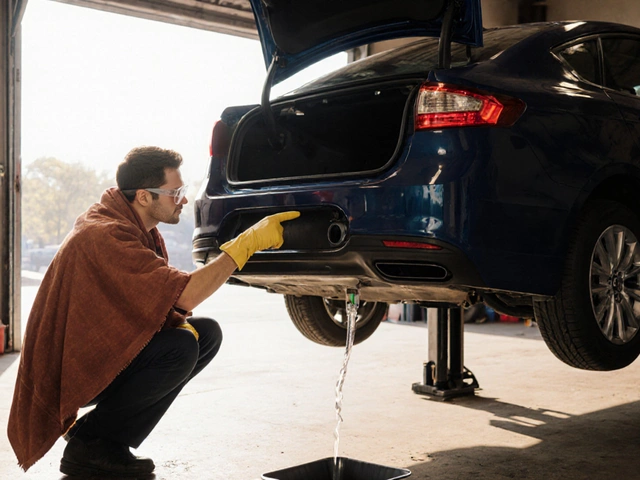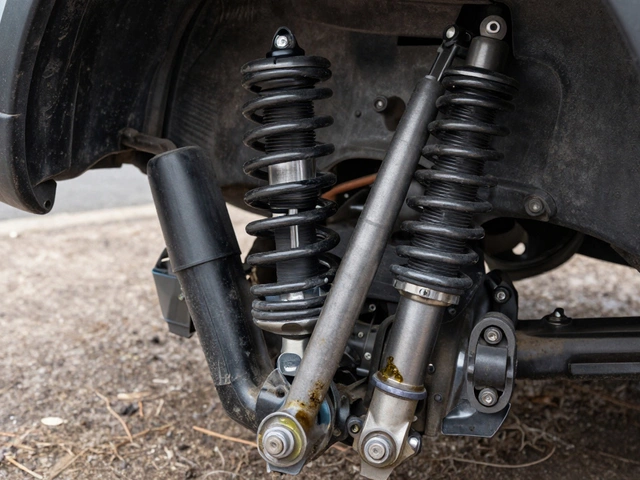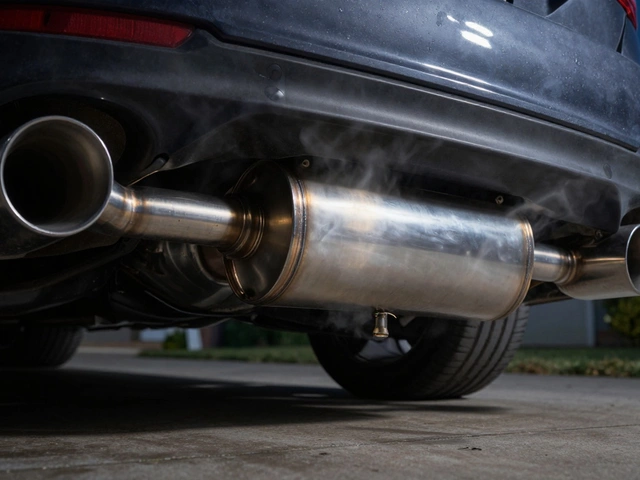Ever heard someone say spark plugs just help your car start? That’s only part of the story. Once you turn the key—or push that start button—spark plugs don’t just clock out and wait for the next shift. They’re actually working every single second your engine’s running. It doesn’t matter if you’re firing up the engine on a chilly morning or cruising down the highway; spark plugs are sparking away, thousands of times per minute. Without them doing their job, your engine would sputter, cough, and call it quits.
Think of spark plugs as your engine’s heartbeat. If they’re not firing right, everything feels off: rough idle, sluggish acceleration, even lower gas mileage. I once put off changing a set in my truck, and before I knew it, I was burning through more gas and my engine started stalling at stoplights. Nothing fancy—just worn plugs causing all that trouble. So, yeah, these little guys do way more than just get the party started for your engine.
- What Spark Plugs Actually Do
- Beyond the Start: How Spark Plugs Affect Performance
- Signs Your Spark Plugs Need Attention
- Tips for Long-Lasting Spark Plugs
What Spark Plugs Actually Do
Spark plugs aren’t just hiding out under your hood for random emergencies—they’re busy every single time your engine runs. Their main job? They fire the electric spark needed to ignite the air-fuel mix in each cylinder. This is what keeps your engine humming, your acceleration snappy, and your road trips smooth. Without working spark plugs, your engine becomes a lump of metal stuck in your driveway.
So how does this little part handle such a big job? When you turn the ignition, voltage from the ignition coil jumps across the gap on the spark plug. That spark lights the fuel and air mix, and boom—your engine starts moving those pistons. But this spark doesn’t just happen once. In a typical 4-cylinder car cruising at 2,000 RPM, each spark plug can fire more than 16,000 times every single minute. Hard to imagine? Here’s a quick breakdown:
| Engine Speed (RPM) | Sparks Per Minute (One Plug) |
|---|---|
| 1,000 | 8,000 |
| 2,000 | 16,000 |
| 3,000 | 24,000 |
Let’s not forget all the other stuff that rides on healthy spark plugs. A good spark plug means better fuel burn—so you get more miles out of every gallon. It also means your engine won’t waste energy struggling to run rough or misfire.
- Spark plugs keep your engine running smoothly, start to finish.
- They help with fuel efficiency and cutting down on emissions.
- Bad plugs can cause rough idling and make engines harder to start.
Pretty much every modern gasoline engine, whether it’s your daily driver or a motorcycle, relies on spark plugs doing their thing—day in and day out. If they’re neglected, you’re looking at engine problems that get worse fast, with annoying symptoms piling up.
Beyond the Start: How Spark Plugs Affect Performance
Spark plugs stick around even after your engine starts—they keep firing away, making sure fuel burns right at every RPM. If your plugs aren’t up to par, your car can run rough, lose power, or even waste more gas than you think. A healthy spark plug helps your engine turn every drop of fuel into real motion, meaning better throttle response and smoother driving, not to mention fewer stops at the gas station.
Here’s a quick reality check: even a single misfiring spark plug can drop your fuel efficiency by up to 30%. That’s not small change, especially with gas prices these days. More than that, old or dirty plugs make your engine work harder, which can create more tailpipe pollution and even lead to costly engine issues down the line.
"Modern spark plugs are designed for both longevity and consistent performance—without good plugs, your engine can’t deliver what it was built for." — Car and Driver Magazine
If you’ve ever wondered why your engine feels lazy or makes more noise than usual, don’t look past the spark plugs. Here’s what good spark plugs do besides helping your car start:
- Keep the engine running smooth at every speed
- Boost fuel economy by burning fuel more efficiently
- Support quick acceleration when you hit the gas
- Reduce emissions, avoiding failed smog tests
- Lower the risk of engine misfires—a big deal for your wallet and for engine life
Want some numbers for perspective? Check out this table. It covers how healthy vs. worn plugs can impact performance in real cars:
| Condition | Fuel Efficiency Impact | Emissions Impact | Horsepower Impact |
|---|---|---|---|
| Healthy Spark Plugs | +0% (Optimal) | +0% (Clean Burn) | +0% (Full Power) |
| Worn/Fouled Spark Plugs | -15% to -30% | +20% (More Pollution) | -5% to -10% |
So if you want your engine to do its job without issues, don’t just think about spark plugs at startup. Spark plugs matter the whole time you’re behind the wheel.

Signs Your Spark Plugs Need Attention
If your ride's acting weird, there's a decent chance your spark plugs might be calling out for some love. These are a few classic symptoms:
- Rough Idling: If your engine's bouncing or shaking when you stop at a red light, old plugs could be misfiring.
- Hard Starts: Turning the key shouldn’t feel like a strength workout. Bad plugs make it tough to fire up your car, especially when it’s cold.
- Poor Acceleration: If it feels like you’re stepping on a sponge instead of the gas pedal, spark plugs aren’t delivering the needed zap.
- Worse Gas Mileage: Bad plugs force the engine to use more fuel—sometimes up to 30% extra. That adds up fast at the pump.
- Engine Misfires: You might notice the car jerking or even a quick “pop” sound—both can mean plugs are failing to spark consistently.
- Check Engine Light: A flickering or constant check engine light is the car’s way of saying something’s up, and failing spark plugs are a common cause.
Here’s a handy look at the problems you might notice and what they usually mean:
| Symptom | Possible Cause | Why It Happens |
|---|---|---|
| Hard starts | Worn spark plugs | Not enough spark to ignite fuel right away |
| Engine shaking | Misfiring plug | Incomplete combustion in one or more cylinders |
| Lower MPG | Inefficient spark | Engine has to work harder, burns more gas |
| Sluggish acceleration | Weak spark | Poor fuel ignition slows power delivery |
Don’t ignore these clues. Driving with bad plugs can eventually damage your engine, catalytic converter, or even leave you stranded on a rough day. Catching these signs early usually means you’ll save money and hassle. Most modern plugs can last from 30,000 to 100,000 miles—check your car’s manual to be sure. If you do spot these issues, swapping in fresh plugs usually makes a night-and-day difference.
Tips for Long-Lasting Spark Plugs
If you want your spark plugs to last and keep your engine happy, it’s all about basic care and attention. Modern spark plugs can last anywhere from 30,000 miles (for copper) up to 100,000 miles (for iridium or platinum types). But those claims assume you’re treating your engine right.
Here’s what you can do to stretch the life out of your spark plugs:
- Use the right type: Check your owner’s manual and stick to the recommended spark plug type. Swapping out fancy plugs for the wrong kind can mess with performance and lead to faster wear.
- Watch the fuel: Bad gas, or fuel with too much ethanol, can foul plugs sooner. Always use the grade your engine asks for, and avoid discount gas stations that might not filter well.
- Avoid short trips: Engines don’t reach peak temps on super short drives, which can leave plugs dirty. If you only go for quick trips to the corner store, try to squeeze in a longer drive now and then.
- Regular checks: Pop the plugs out during scheduled maintenance or every 30,000 miles for a quick inspection—even if the manual promises more. Early warning signs are easier to catch that way.
- Keep the engine tuned: Leaky valves, old wires, or busted ignition coils all make plugs work harder. Stay on top of your regular tune-ups.
Here’s a quick table showing average spark plug life for different types:
| Type | Typical Lifespan (Miles) |
|---|---|
| Copper | 20,000 - 30,000 |
| Platinum | 60,000 - 80,000 |
| Iridium | 80,000 - 100,000 |
If you ever see oil or heavy deposits on a plug, that’s a red flag for a deeper issue (think valve leaks or burning oil). Fix the root problem, or you’ll just keep buying new plugs. And don’t forget to use a torque wrench when putting them in—too tight or too loose can cause all sorts of headaches. These small steps keep your plugs happy and your engine smoother for longer.








